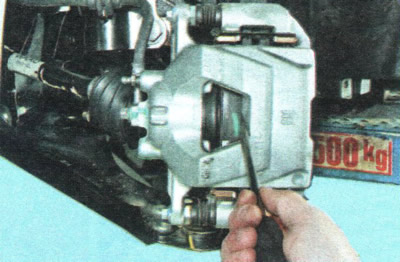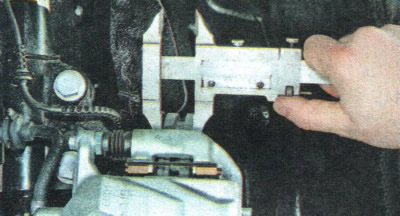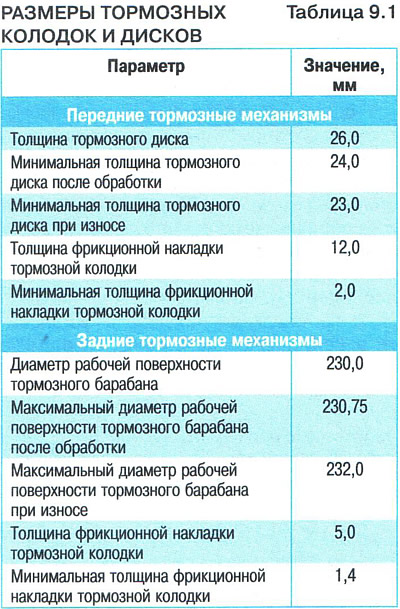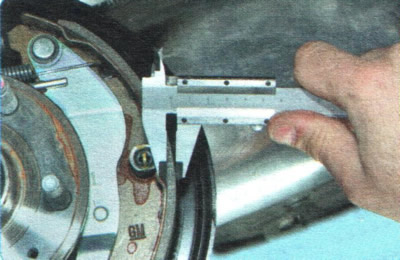NOTE: If the vehicle pulls to the side or noise is heard when braking, check the condition of the brake pads.
1. Place the car on a lift or jack (coasters).
2. Remove the front wheel.

3. Check the condition of the pads through the hole in the caliper.

NOTE: The outer brake pad cannot be accessed through a hole in the caliper. To check the technical condition, this block will have to be removed (see «Replacing the brake pads of the brake mechanism of the front wheel»).
If the thickness of the friction linings is less than the allowable value (tab. 9.1), replace the brake pads (see «Replacing the brake pads of the brake mechanism of the front wheel»).


4. Measure the thickness of the brake disc at eight points evenly spaced around the circumference (through 45°) and approximately 15 mm from the outer edge of the disc. If its thickness is less than the maximum allowable value (see table. 9.1), replace the brake disc (see «Brake disc replacement»).

5. To check the degree of wear of the brake pads of the rear brake mechanism, remove the rear wheel and brake drum (see «Removal and installation of a brake drum»).

6. Measure the thickness of the friction lining. If the thickness is less than the allowable value (see table. 9.1), replace pads (see «Replacing the brake pads of the brake mechanism of the rear wheel»).
Replace pads in the following cases:
- friction lining thickness 1.4 mm or less;
- the surface of the pads is oiled;
- pads are loosely connected to the base.

7. Measure the diameter of the working surface of the brake drum. If it is greater than the allowed value (see table. 9.1), replace the drum (see «Removal and installation of a brake drum»).
